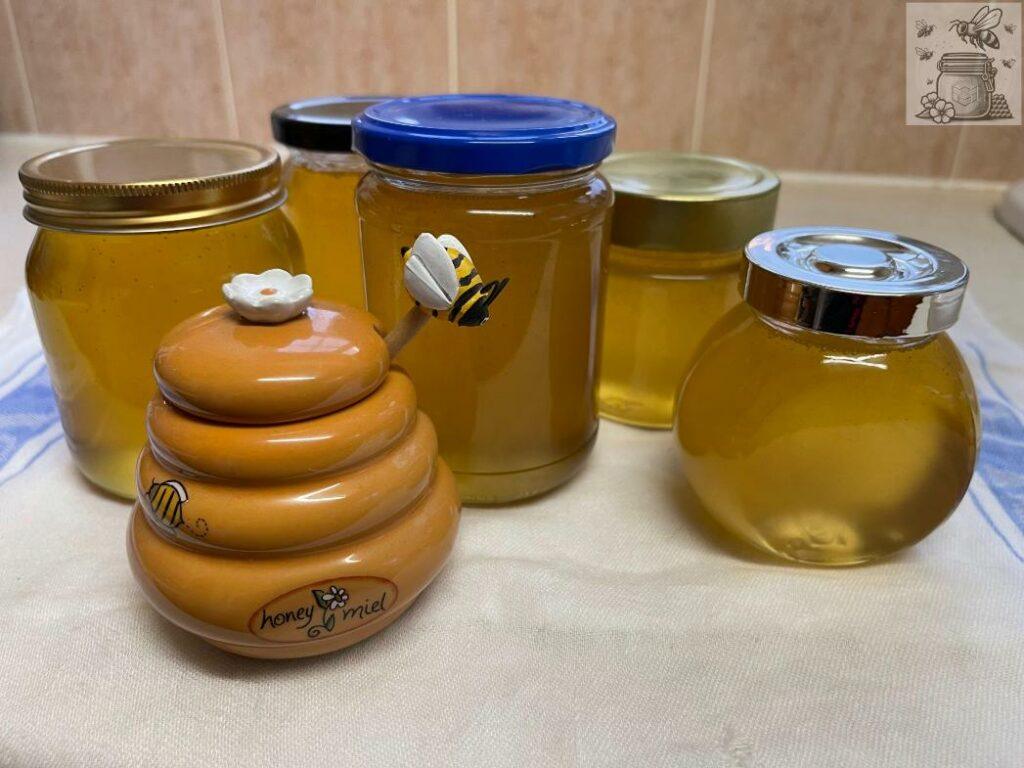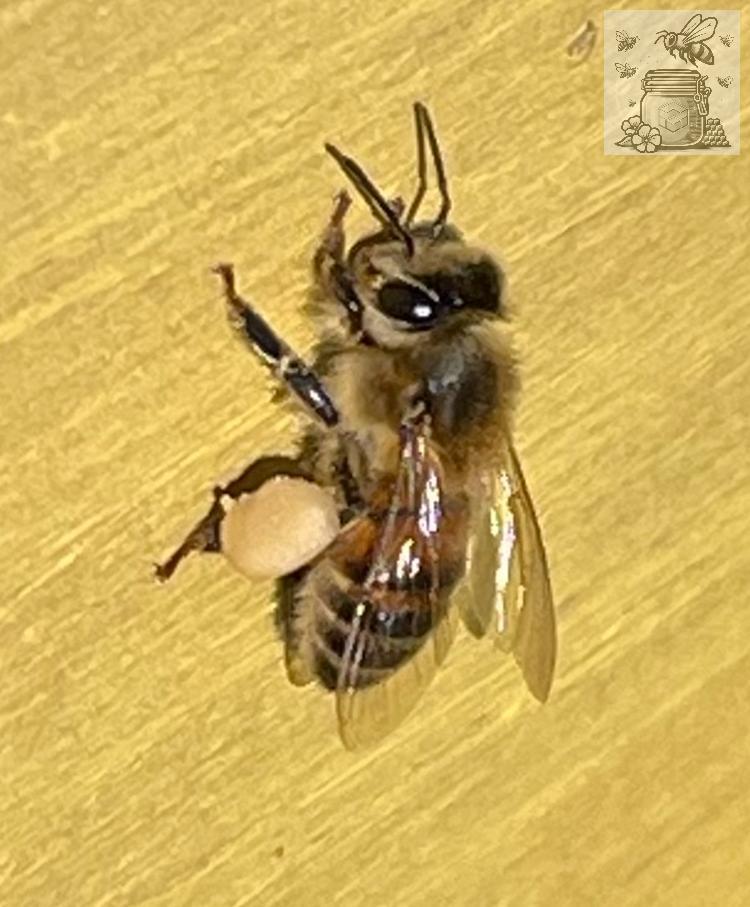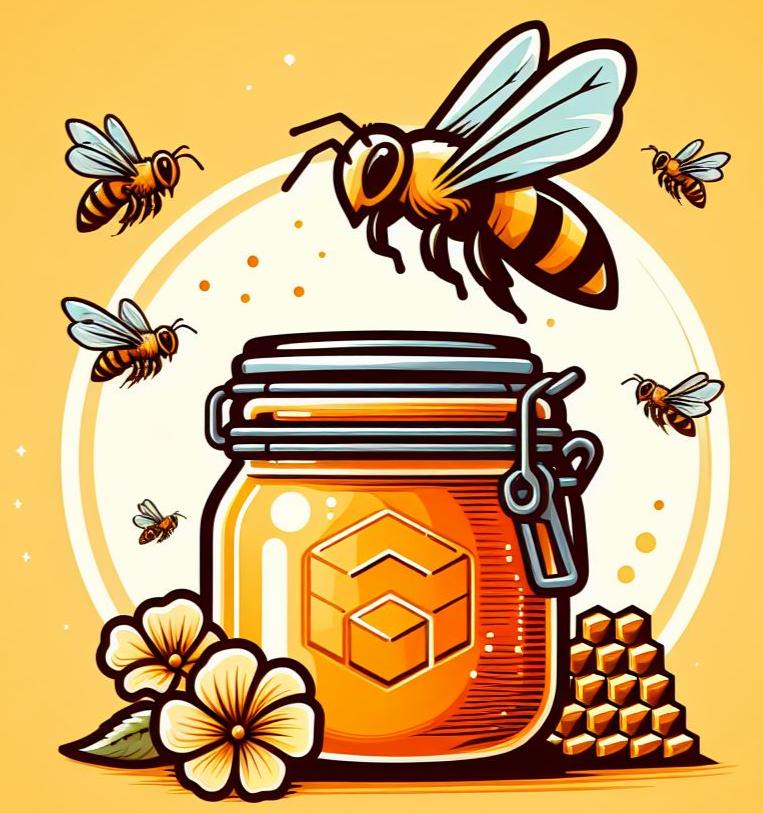Honey bees, though tiny insects, are real master crafters of various products that have captivated humans for centuries. I learnt about some of them in my childhood: honey (of course), propolis and wax. Much later I found out that there are other remarkable things that can be discovered in a bee hive, each with its unique qualities: pollen, royal jelly and bee bread. But that was not all. Many people would have heard about honey bee venom used in medicine, skin care and apitherapy. But have you ever heard about drone milk or moth extract?
The Sweet Benefits of Honey
For me honey has always been as liquid gold: beautiful, beneficial and deserving respectful consumption. It’s not merely a sweetener; honey is a multifaceted substance with a history as rich as its taste.
It has an elegant natural composition that explains its versatility, not just in the kitchen but as part of traditional and modern health practices.

The creation of honey is a spectacular process. The bees collect nectar from flowers and bring it back to their hive. There, it’s transformed into honey through the work of many bees, each contributing to the process. This collaboration results in an array of honey types, each unique in flavour, colour, and nutritional content, depending on the flowers visited.
First of all honey is valued as food for its numerous delicious tastes. Beyond that, its antibacterial properties have been recognised in wound healing, which explains honey’s revered place in natural medicine.
Local honey can help people suffering from hay fever to alleviate the condition.
I believe that harvesting honey should be done with respect for honey bees’ hard work, always remembering their vital role in our ecosystem.
Pollen: Nature’s Multivitamin
I often hear buzz about superfoods, but one that really catches my attention is bee pollen.

In this photo you can see this treasure in the form of a sphere on the hind leg of the honey bee — “pollen basket”. It’s the fine powdery substance that bees gather from flowers.
Every tiny grain is a cocktail of vitamins, minerals, proteins, lipids, and carbohydrates. No wonder it’s sometimes called “nature’s multivitamin”.
Bee pollen isn’t just for bees. For us, it boasts a wealth of natural nutrients that can increase your nutritional intake. It’s been associated with everything from enhanced endurance to relief from seasonal allergies. This is where your local honey will be invaluable — raw honey, straight from the hive will contain pollen collected by honey bees locally, and that is the reason why many people swear by the effectiveness of this method.
Pollen taste is pleasantly sweet with a touch of earthiness—quite unique. You can purchase pollen separately from honey or collect some from your hives if you are a beekeeper. Sprinkle some over your morning yogurt or blend it into a smoothie — easy, wholesome and delicious.
Just remember about the importance of sustainable practices. Responsible beekeepers ensure their busy workers are left with plenty of pollen for their own needs. Sustainability should always be a top priority when purchasing or harvesting bee products.
Bee Bread Is What?
Pollen is closely connected with bee bread which is sometimes referred to as “bee pollen’s supercharged version”. It is lesser-known yet nutritionally rich product.
Bee bread is a fermented mixture of pollen, nectar, and enzymes produced by honeybees. Due to its enhanced bioavailability from fermentation this bee product is treasured for its potential health benefits.
Bee bread often stored in honeycomb cells and is an essential food source for bees, providing protein, vitamins, and minerals. Unlike raw pollen, bee bread undergoes a natural fermentation process within the hive, making it more digestible and nutritionally richer.
For humans, bee bread is considered a nutrient-dense supplement. It contains amino acids, vitamins (particularly B vitamins), minerals, and antioxidants. People consume it for boosting immunity, enhancing energy, and improving digestion.
Next on our list is royal jelly. Reserved for the queen bee and her future young, this substance is believed to transform an ordinary worker bee’s life span from weeks into years for the queen. There’s a reason this product is tagged ‘royal’ and it’s not just about the hierarchy in the beehive. This rich, creamy textured substance is also valued by its potential benefits for our health and beauty routines.
Royal Jelly: A Delicacy Fit for a Queen
In the intricate world of a bee colony, royal jelly holds a place of honor. It’s a substance produced by nurse bees, and it’s used to feed all larvae in the colony during their first few days. However, it’s most notable for being the exclusive food for the queen bee throughout her life.
Its exclusivity in the hive has sparked interest in its use for humans. With years I’ve noticed an increase in its popularity, especially amongst those looking for natural health and skincare products. The proteins, amino acids, vitamins, and minerals present in royal jelly are thought to have various benefits, such as enhanced energy, a stronger immune system, and improved skin health.
Despite its potential benefits, harvesting royal jelly requires expertise and great care to ensure that the bees are not harmed, and the hive remains healthy. Beekeepers who practice ethical and sustainable methods use a technique where they replicate the queen’s environment without disrupting the colony’s natural cycle too greatly.
Considering the effort that goes into obtaining a small amount of this creamy substance and its potential benefits, it doesn’t come as a surprise that it’s often treated as a luxury item, much more than just a food.
And of course, as with all the other bee products it is important to remember about a sustainable consumption of royal jelly, because we need to protect the bees that work so hard to produce it.
Another example of a bee-derived product that’s used far beyond the confines of the hive is beeswax.
The Versatility of Beeswax
Beeswax is more than just a byproduct of the honey-making process; it’s a remarkable substance with applications reaching far beyond the beehive. Bees produce wax to construct the honeycombs where honey and larvae are stored. This natural wax is secreted from the glands on the abdomen of worker bees and is initially transparent, becoming opaque after being chewed and formed by the bees.
Below is the most fascinating video I have come across on how honey bees produce wax.
One of the most common uses of beeswax is in candle making. Unlike paraffin candles, beeswax candles burn cleaner and emit a natural honey scent. But the usefulness of beeswax extends into other areas, such as the beauty industry, where it’s valued for its skin conditioning properties. You’ll find it infused into lotions, balms, and cosmetics. Its properties also make it useful for food preservation, as in beeswax wraps that provide a sustainable alternative to plastic cling film.
Another unique bee product is propolis, which, like beeswax, holds its own set of remarkable uses and benefits. While beeswax lends itself to the structure and economy within the hive, propolis serves as the hive’s defense system.
Propolis: The Bee’s Protective Barrier
Bees are not just producers of honey; they’re also incredible pharmacists of the natural world. Propolis, sometimes called ‘bee glue’, is resinous mixture crafted by bees using sap from trees and other botanical sources. They use it to seal cracks and sterilize their hives, creating a protective barrier against intruders and infections.
The composition of propolis is quite remarkable. It’s packed with amino acids, vitamins, and various bioactive compounds, including flavonoids known for their antioxidant properties. Medical research into propolis has begun to demonstrate its potential benefits for human health, most notably for its antiviral, antibacterial, and antifungal properties.
The traditional and modern medicinal uses of propolis are diverse. People have used it for centuries in salves for wound healing, and recent studies suggest it could help soothe sore throats, protect oral health, and support the immune system.
Harvesting propolis involves scraping it off the hive structures, a process that beekeepers are careful to do correctly. It is crucial to remove only excess propolis to ensure the health and integrity of the hive remains uncompromised. After all, our goal is to benefit from bee products while respecting and safeguarding the insects that produce them.
And that leads to a controversial (in terms of the way it is collected) bee product — honey bee venom.
Exploring Honey Bee Venom
Honey bee venom is a potent mixture of proteins and enzymes, primarily used by bees as a defense mechanism. Stored in a specialized sac within the bee’s abdomen, the venom is delivered through a barbed stinger when the bee feels threatened. This stinger punctures the skin of its target, injecting the venom to deter predators or incapacitate smaller threats. Unfortunately, honey bees are doomed to die after stinging; the barbed stinger becomes lodged in the target and tears away from the bee’s body, causing fatal injury.
Despite its deadly use, honey bee venom has notable benefits. It’s utilised in apitherapy for its anti-inflammatory and pain-relieving properties, potentially aiding in conditions like arthritis and multiple sclerosis. Additionally, it’s included in some skincare products claiming anti-aging effects.
Harvesting honey bee venom involves stimulating bees to sting a collection surface using an electric shock device. This process is designed to be humane, minimising harm to the bees. The venom is then collected and processed for medical and cosmetic use.
Drone Bee Milk (Apilarnil)
Apilarnil is the official name for the biological product derived from the drone larvae of honey bees. It is collected from the drone brood (comb cells containing male bee larvae) when the larvae are 7 days old.
Drone milk (or drone bee milk) is a substance produced by honeybee colonies, specifically intended for nourishing drone larvae. It is somewhat similar to royal jelly, but with a different composition and intended for male bees (drones).
It is rich in nutrients, including:
- Proteins: essential amino acids for growth and development.
- Lipids: fats, including fatty acids that support the development of drones.
- Vitamins: B-complex vitamins, including B1, B2, B6, and B12.
- Minerals: potassium, calcium, magnesium, and other trace minerals.
- Enzymes: various enzymes that support digestion and cellular processes in bees.
- Hormones: like royal jelly, drone milk may contain hormones such as juvenile hormone, which regulates growth.
While not as widely known or studied as royal jelly, it is gaining interest for its potential health benefits, particularly in apiculture and natural supplements.
Wax Moth and Beehive — Not Just a Pest
The wax moth, particularly the Greater Wax Moth (Galleria mellonella), is a small, unassuming insect with a fascinating—and somewhat notorious—connection to honey bees. While bees are famous for their honey and beeswax production, the wax moth, often seen as a pest in beekeeping, plays a unique role in the bee world and has even become a source of valuable medicinal products like Ognevka (wax moth) extract.
Though wax moths are the enemy of beekeepers, they have been revered in certain traditional medicinal practices, particularly in Eastern Europe, for their remarkable health benefits. The medicinal use of wax moth larvae goes back centuries, claiming respiratory, cardiovascular and immune system benefits, and ability to help in wound healing and infection prevention due to antimicrobial properties.
Modern interest has grown in recent years due to the unique properties of their enzyme-rich extract. However, most available research on wax moth (Ognevka) extract is still in the experimental or preliminary stages, especially in the context of human health.
Conserving Our Buzzing Benefactors
As I outline the various bee products and their uses, I’m reminded that the true value of bees goes beyond their material contributions. The health of our ecosystems is intrinsically linked to the wellbeing of bee colonies. And so it is our collective responsibility to ensure the sustainability of bee populations.
I am always for supporting local beekeepers who employ ethical and sustainable practices. And I am also for the responsible use of bee products. Honey bees provide us with unique marvelous products. Let’s repay them not only by enjoying and appreciating these gifts but also by committing to actions that protect and preserve bee habitats.
